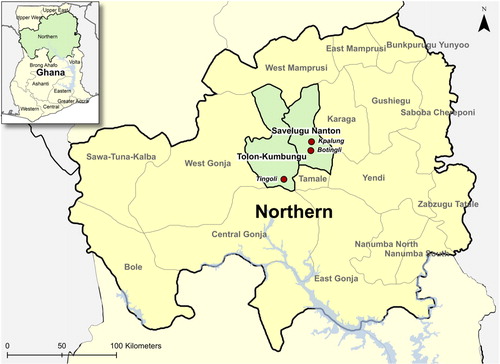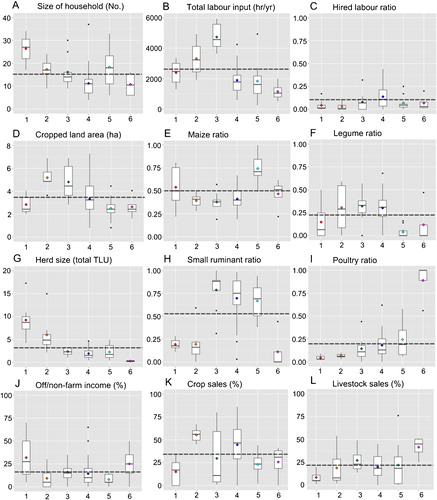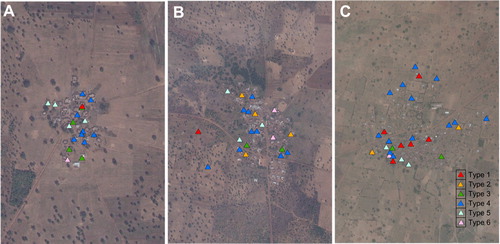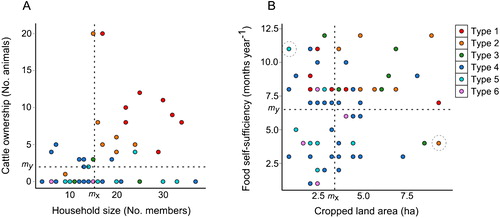Figures & data

Table 1 Description of variables used for farm typology construction.

Table 2 Eigenvalues and percentage variance explained by five principal components (PC⿿s) using PCA.



Table 3 Main implications of the farm typology for targeting of agricultural interventions in Savelugu-Nanton and Tolon-Kumbungu districts of Ghana⿿s Northern Region.

